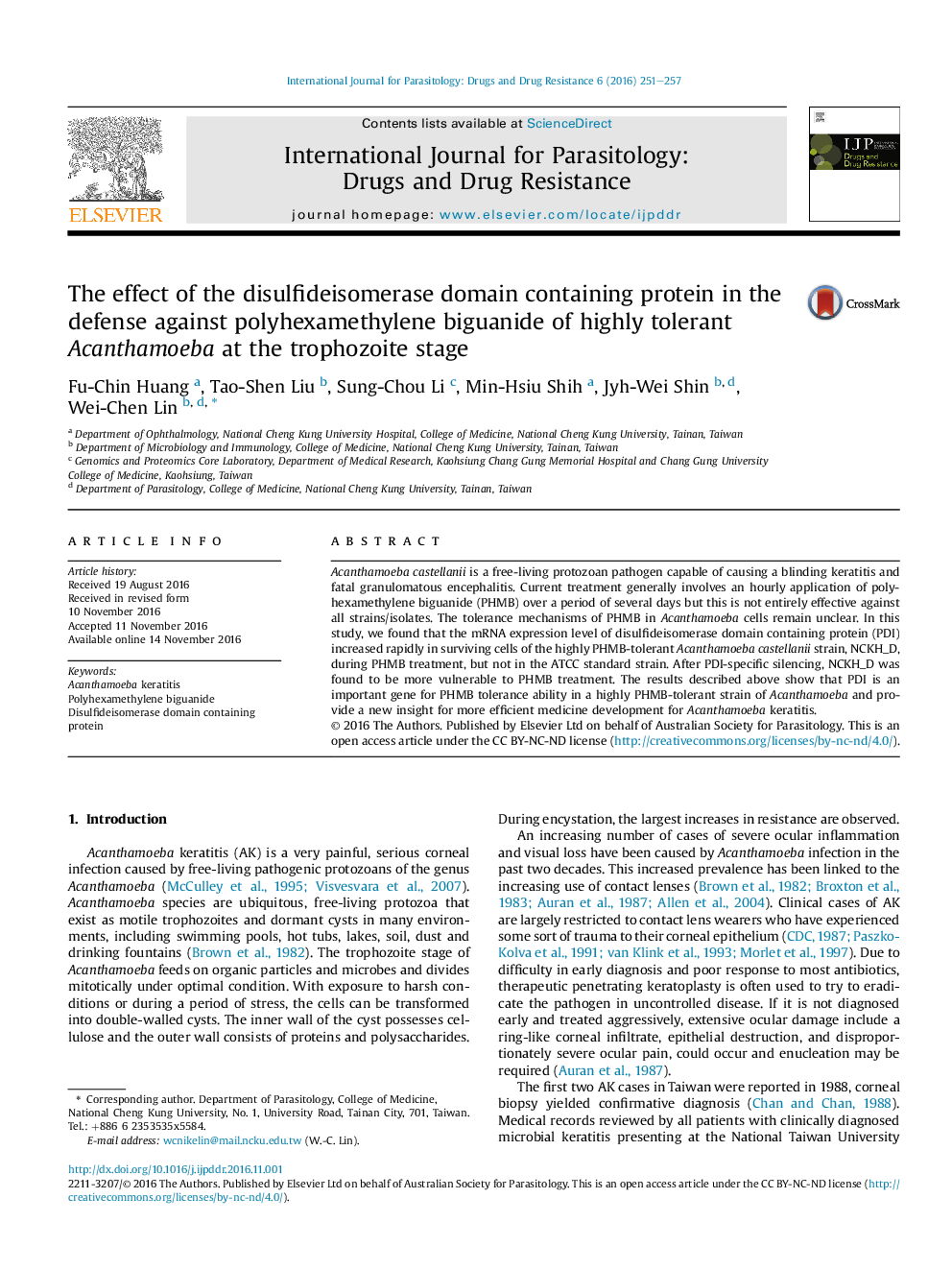| Article ID | Journal | Published Year | Pages | File Type |
|---|---|---|---|---|
| 6481764 | International Journal for Parasitology: Drugs and Drug Resistance | 2016 | 7 Pages |
Acanthamoeba castellanii is a free-living protozoan pathogen capable of causing a blinding keratitis and fatal granulomatous encephalitis. Current treatment generally involves an hourly application of polyhexamethylene biguanide (PHMB) over a period of several days but this is not entirely effective against all strains/isolates. The tolerance mechanisms of PHMB in Acanthamoeba cells remain unclear. In this study, we found that the mRNA expression level of disulfideisomerase domain containing protein (PDI) increased rapidly in surviving cells of the highly PHMB-tolerant Acanthamoeba castellanii strain, NCKH_D, during PHMB treatment, but not in the ATCC standard strain. After PDI-specific silencing, NCKH_D was found to be more vulnerable to PHMB treatment. The results described above show that PDI is an important gene for PHMB tolerance ability in a highly PHMB-tolerant strain of Acanthamoeba and provide a new insight for more efficient medicine development for Acanthamoeba keratitis.
Graphical abstractDownload high-res image (177KB)Download full-size image
